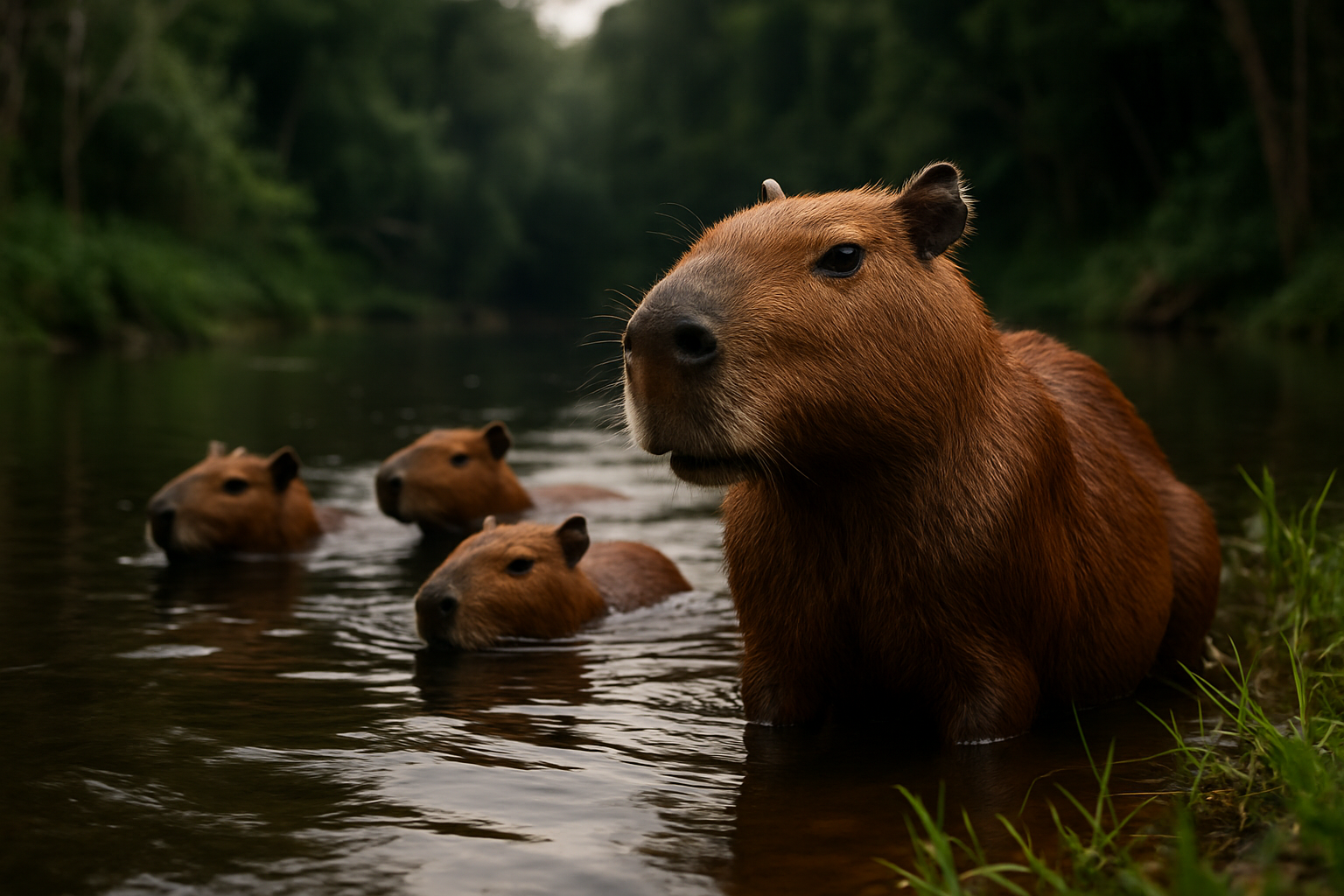The Fascinating World of Capybaras: Nature's Gentle Giants
Capybaras, the world's largest rodents, have captivated animal enthusiasts and social media users alike with their docile nature and charming appearance. These South American natives are gaining popularity as both exotic pets and internet sensations. But beyond their adorable exterior lies a complex and intriguing species with unique adaptations and behaviors that make them truly remarkable creatures.

A Brief History of Capybaras
Capybaras, scientifically known as Hydrochoerus hydrochaeris, have a long and intriguing evolutionary history. These large rodents are native to South America and have inhabited the continent for millions of years. Fossil records indicate that capybaras evolved from smaller rodent ancestors during the Miocene epoch, approximately 5 to 23 million years ago.
Throughout their evolutionary journey, capybaras have developed unique adaptations that allow them to thrive in their native habitats. Their semi-aquatic lifestyle has shaped their physical characteristics, including webbed feet for efficient swimming and eyes, ears, and nostrils positioned high on their heads to remain above water while submerged.
Historically, capybaras have played a significant role in the ecosystems and cultures of South American countries. Indigenous peoples have long hunted capybaras for their meat and hides, while also incorporating them into their folklore and traditions.
Capybara Biology and Behavior
Capybaras are remarkably well-adapted to their semi-aquatic lifestyle. These large rodents can grow up to 4 feet in length and weigh up to 150 pounds, making them the largest living rodents in the world. Their barrel-shaped bodies, short legs, and partially webbed toes make them excellent swimmers, capable of staying submerged for up to five minutes.
One of the most fascinating aspects of capybara biology is their digestive system. Like other rodents, capybaras are herbivores, but they have a unique ability to extract maximum nutrition from their plant-based diet. Their large, complex stomachs allow them to ferment and break down tough plant material efficiently. This adaptation enables capybaras to thrive on a diet of grasses, aquatic plants, and tree bark.
Capybaras are also known for their highly social nature. They live in groups ranging from 10 to 40 individuals, with a complex social hierarchy. These groups, called herds, are typically led by a dominant male and include several females, their offspring, and subordinate males. This social structure provides protection from predators and allows for cooperative care of young.
Capybaras in the Wild
In their natural habitats, capybaras play a crucial role in maintaining ecosystem balance. These large rodents are found in a variety of environments across South America, including grasslands, forests, and wetlands. They are particularly abundant in the Amazon Basin and the Pantanal, the world’s largest tropical wetland area.
Capybaras are considered a keystone species in many of these ecosystems. Their grazing habits help to maintain the diversity of plant species in their habitats, while their droppings serve as an important source of nutrients for aquatic ecosystems. Additionally, capybaras are a vital food source for many predators, including jaguars, caimans, and anacondas.
Despite their importance, capybaras face several threats in the wild. Habitat loss due to agricultural expansion and urbanization is a significant concern, as is hunting for their meat and hides. Climate change also poses a potential threat, as it may alter the wetland habitats that capybaras rely on for survival.
The Rise of Capybaras as Exotic Pets
In recent years, there has been a growing trend of keeping capybaras as exotic pets. Their gentle nature, intelligence, and unique appearance have made them increasingly popular among animal enthusiasts. However, owning a capybara is a significant responsibility that requires careful consideration and preparation.
Capybaras have specific care requirements that potential owners must be prepared to meet. These include providing a large, secure outdoor enclosure with access to water for swimming, a specialized diet of grass hay and fresh vegetables, and regular veterinary care from an exotic animal specialist. The estimated cost of owning a capybara can range from $5,000 to $10,000 per year, not including initial setup costs.
It’s important to note that capybara ownership is regulated in many areas, and potential owners should thoroughly research local laws and obtain necessary permits before considering a capybara as a pet. Additionally, the exotic pet trade can have negative impacts on wild capybara populations and ecosystems, making it crucial for potential owners to source their pets from reputable, licensed breeders.
Conservation and Future Prospects
While capybaras are not currently considered endangered, conservation efforts are essential to ensure their long-term survival in the wild. Several organizations are working to protect capybara habitats and promote sustainable management practices in areas where these animals are hunted for their meat and hides.
One innovative approach to capybara conservation involves eco-tourism. In some areas of South America, capybara-watching tours have become popular, providing an economic incentive for local communities to protect these animals and their habitats. This type of sustainable tourism not only benefits capybaras but also helps to preserve entire ecosystems.
Research into capybara biology and behavior continues to yield new insights that may have implications for conservation and even human health. For example, studies of the capybara’s efficient digestive system could potentially inform the development of new approaches to sustainable agriculture and biofuel production.
As we look to the future, it’s clear that capybaras will continue to captivate our imagination and play important roles in both wild ecosystems and human society. By promoting understanding and appreciation of these remarkable creatures, we can help ensure that capybaras remain a cherished part of our natural world for generations to come.





